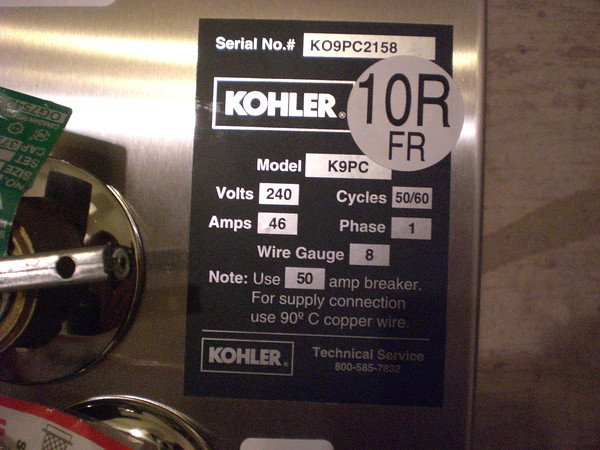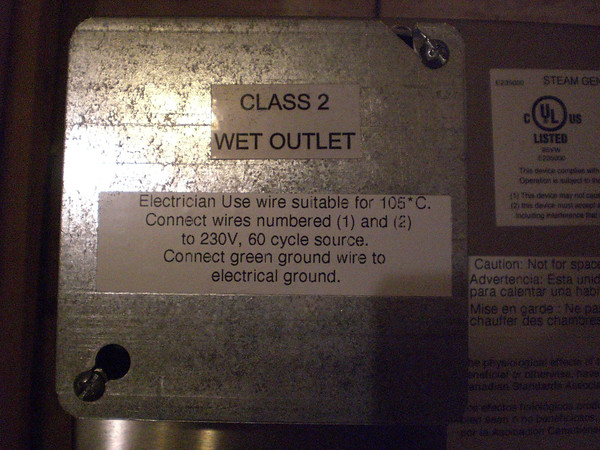BimmerRacer
Member
Kohler 1733 residential steam shower generator.
240 V, 50/60 Hz, 50 A
Rated an 9kW
6/2 or 8/2 gauge and what type(s) or wire?
240 V, 50/60 Hz, 50 A
Rated an 9kW
6/2 or 8/2 gauge and what type(s) or wire?



What about the 80% rule.
I have read on many threads and I believe it is code in some areas that the total connected load should not be more than 80% of the rating of the overcurrent protection devices.
Is this correct? Should it be less of a concern since the steam generator is the only load on this circuit?
Great. Thx JW
On another note BimmerRacer's steam generator doe not call for GFCI (nuissance trip) the one I bought however calls for one. Why this difference of opinion on something that I would consider a lifesaving device?
This is awkward, but...
It looks like you're using an ad blocker. We get it, but (1) terrylove.com can't live without ads, and (2) ad blockers can cause issues with videos and comments. If you'd like to support the site, please allow ads.
If any particular ad is your REASON for blocking ads, please let us know. We might be able to do something about it. Thanks.